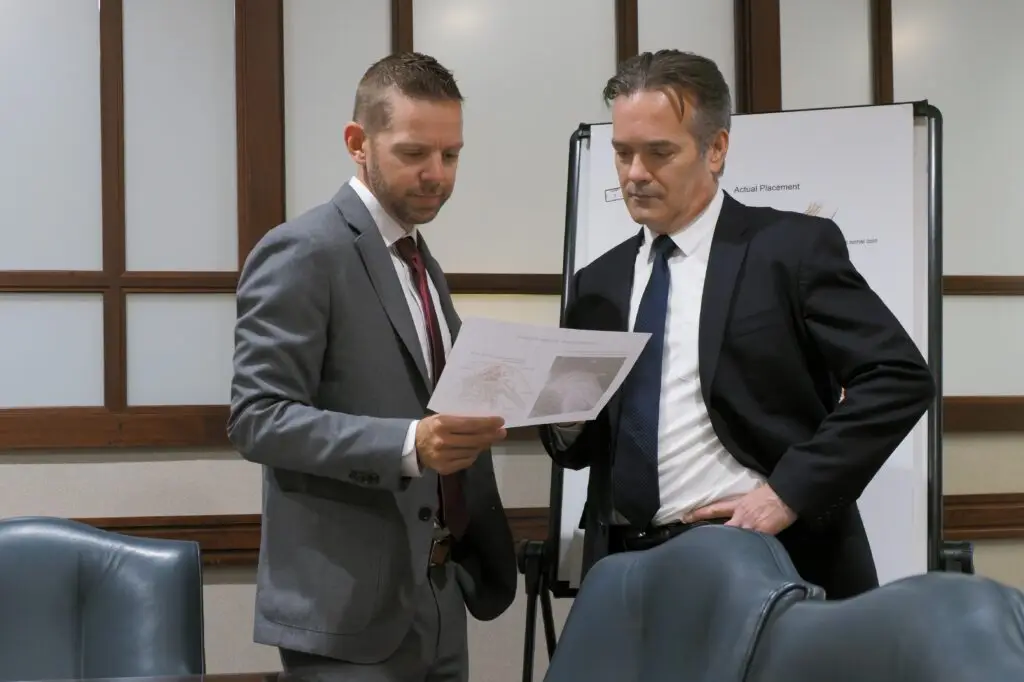What Is the Timeline of a Personal Injury Lawsuit in Indiana?
No two personal injury cases are the same, and as a result, the timeline for resolving a lawsuit can vary dramatically depending on the specific details of the case. Factors such as the complexity of the accident, the severity of injuries, the willingness of the insurance company to negotiate, and the need for expert testimony can all impact the overall duration. While some cases may settle in a matter of months, others can take years if litigation becomes necessary. It’s important for victims to remain patient and focus on building a strong case to secure the compensation they deserve.
At Doehrman Buba Ring, we understand how overwhelming the recovery process can be for personal injury victims. Our experienced personal injury attorneys are dedicated to fighting on your behalf to recover fair compensation for your injuries, medical expenses, lost wages, and more. With a results-oriented approach and a client-first focus, we guide you through every step of the legal process, from gathering evidence and filing the claim to negotiating with insurance companies and fighting for you in court, if necessary. Contact us today to schedule a free consultation and take the first step toward justice and financial recovery. Your path to fair compensation starts here.

What Does a Typical Personal Injury Lawsuit Timeline Look Like?
Filing a personal injury lawsuit can seem overwhelming, but understanding the typical timeline helps clarify what to expect. While every case is unique, most personal injury claims follow a standard progression from the initial accident to resolution. Here’s a breakdown of the process:
- The Accident: Everything begins with the incident that caused the injury, such as a car crash or slip-and-fall. Immediately following the accident, it’s crucial to seek medical treatment and document the scene if possible.
- Initial Consultation: The injured party consults with a personal injury attorney to evaluate the details of the case. At this stage, evidence is reviewed, and legal strategies are discussed.
- Investigation and Filing the Claim: The attorney conducts a thorough investigation, gathering medical records, witness statements, photos, and other evidence. Once the case is ready, a formal lawsuit is filed against the responsible parties.
- Discovery Phase: Both sides exchange information related to the case during this phase. This can include depositions, interrogatories, and requests for documentation, all aimed at building a comprehensive case.
- Negotiations and Mediation: Before heading to trial, attorneys for the parties involved often attempt to reach a fair settlement. Mediation may occur to resolve disputes and avoid a lengthy courtroom process.
- Trial (if necessary): If no settlement is reached, the case proceeds to trial. Both sides present their arguments, and a judge or jury determines the outcome, including any compensation awarded.
- Resolution and Compensation: Following a verdict or settlement, the injured party receives compensation for damages, which may include medical bills, lost wages, and pain and suffering.
Understanding this timeline ensures you stay prepared and informed at every step of the process, paving the way for a smoother experience and a successful outcome.
How Long Do Personal Injury Cases Usually Take To Resolve?
The duration of a personal injury case can vary significantly depending on the nature of the incident and the complexities involved. While some cases are resolved quickly, others may take months or even years to reach a conclusion. Below is a breakdown of typical timelines for different types of personal injury cases:
- Motor Vehicle Accidents: These cases are often resolved within a few months to a year, depending on the severity of injuries, the clarity of liability, and the willingness of insurance companies to settle. However, disputes over fault or extensive damages can extend the timeline.
- Slip and Fall Accidents: Typically taking several months to over a year, these cases depend heavily on establishing property owner negligence and gathering sufficient evidence, which can delay resolution.
- Workplace Accidents: Workplace injury cases may resolve within a year if managed through workers’ compensation claims, but litigation against third parties could substantially extend this timeline.
- Medical Malpractice: Due to the complexity of proving negligence and the need for extensive expert testimony, these cases can take 1 to 3 years or longer to resolve.
- Product Liability: Depending on the scope of evidence required and whether the case involves multiple plaintiffs (as in class actions), resolution may take 1 to 2 years or more.
- Wrongful Death: These cases often take a year or longer to resolve, as they involve higher stakes, contested damages, and thorough investigation into liability.
- Dog Bites and Animal Attacks: Relatively straightforward cases may be resolved within a few months, particularly if liability is clear. However, disputes over damages or owner negligence could extend the timeframe.
Understanding these timelines helps set realistic expectations and ensures you are equipped to handle the legal process efficiently for your specific case.
What Factors May Affect the Personal Injury Case Timeline?
When navigating a personal injury case, various factors can significantly influence the timeline from filing to resolution. Understanding these elements is crucial to managing expectations and optimizing the process. Below, we break down key factors that can impact the personal injury case timeline:
1. Complexity of the Case
The more complex a case is, the longer it is likely to take. Cases involving multiple parties, ambiguous liability, or intricate legal issues may require extensive investigation, expert testimonies, and prolonged negotiation phases, all of which add time to the overall process.
2. Severity of Injuries
The extent of the injuries in a case can play a critical role in determining the personal injury case timeline. Severe injuries often involve prolonged medical treatment and recovery, which delays the final calculation of damages. Settlements are typically not finalized until the full scope of long-term medical costs and rehabilitation needs are clear.
3. Investigation and Evidence Collection
Thorough evidence gathering is a vital part of any personal injury case. This process may include reviewing medical records, collecting eyewitness statements, consulting with experts, and reconstructing accidents. When evidence is difficult to obtain or requires specialized input, it may extend the duration of the case.
4. Negotiation vs. Litigation
Most personal injury cases settle through negotiation, because they are resolved faster than those that go to court. However, disputes over liability or the value of damages may necessitate litigation. The court process introduces additional delays due to pretrial motions, discovery, and scheduling challenges, particularly in jurisdictions with heavy caseloads.
5. Insurance Company Cooperation
The cooperation of the insurance companies involved can either expedite or hinder the process. Insurance companies may intentionally delay payouts or dispute claims, forcing claimants to gather more evidence or pursue litigation, which lengthens the personal injury case timeline.
6. Court Availability and Scheduling
If a case proceeds to trial, the availability of the court will directly impact the resolution time. Overburdened courts with high case volumes often result in delayed hearings and significant waiting periods for trial dates.
7. Legal Representation
The efficiency and expertise of your attorney can be a significant factor in case timelines. An experienced personal injury lawyer will have the skills to streamline the process, avoid unnecessary delays, and effectively negotiate on your behalf, ensuring a more rapid resolution.
Being aware of these factors allows you to better prepare, make informed decisions, and proactively address potential delays in your personal injury claim. Effective planning and collaboration with a skilled legal professional are key to navigating the process efficiently.
How Will a Personal Injury Lawyer Help Me Win My Case?
Hiring a personal injury lawyer can significantly increase your chances of a successful case outcome. Their expertise, strategic approach, and unwavering commitment to your best interests ensure that every aspect of your case is handled with precision and care. Here’s how a personal injury lawyer will help you win your case:
- Comprehensive Case Assessment: They will evaluate the details of your case to determine liability, calculate damages, and identify strong legal strategies.
- Legal Expertise and Guidance: With in-depth knowledge of personal injury laws and procedures, they will ensure that your case adheres to all legal requirements, reducing the likelihood of errors.
- Effective Evidence Collection: From gathering witness testimony to securing medical records and accident reports, they will build a compelling case supported by solid evidence.
- Negotiation with Insurance Companies: A skilled lawyer will handle all communication and negotiation with insurance companies, ensuring you receive a fair settlement offer.
- Courtroom Representation: If a settlement cannot be reached, they will confidently represent you in court, presenting your case persuasively to achieve a favorable verdict.
- Maximizing Compensation: They will fight to ensure you receive the full compensation you deserve, covering medical expenses, lost wages, pain and suffering, and other damages.
By relying on a personal injury lawyer, you can focus on recovery while they manage the complexities of your case with precision and determination.

What Is a Personal Injury Lawsuit?
A personal injury lawsuit is a legal action brought by an individual who has suffered harm due to the negligence, recklessness, or intentional actions of another party. This type of lawsuit is designed to hold the responsible party accountable and seek financial compensation for the injured person’s damages. These damages can include the costs of medical treatment, lost income, pain and suffering, and other losses resulting from the injury.
Elements of a Personal Injury Claim
- Duty of Care: The plaintiff must prove that the defendant owed them a legal duty of care. This obligation often applies in scenarios such as driving safely on the road, maintaining safe properties, or providing proper medical care.
- Breach of Duty: It must be demonstrated that the defendant violated or failed to fulfill their duty of care. This breach could involve actions like reckless driving, neglecting property maintenance, or providing substandard medical care.
- Causation: There must be a clear link between the defendant’s breach of duty and the injuries suffered by the plaintiff. The plaintiff needs to show that the harm would not have occurred without the defendant’s negligence.
- Damages: The plaintiff must have suffered actual damages, such as physical injuries, financial losses, or emotional distress, that can be quantified and compensated through legal action.
What Kinds of Accidents Are Covered By Indiana Personal Injury Law?
Indiana personal injury law encompasses a broad range of accidents and incidents caused by negligence or intentional actions. These laws are designed to protect individuals who have suffered harm by providing avenues for compensation due to physical, emotional, or financial damages. Below are the key types of accidents covered under Indiana personal injury law:
Motor Vehicle Accidents
Motor vehicle accidents are among the most common personal injury claims in Indiana. This category includes car crashes, motorcycle accidents, truck collisions, and pedestrian injuries caused by careless, reckless, or impaired drivers. Victims may seek compensation for medical bills, property damage, lost wages, and pain and suffering.
Slip and Fall Accidents
Property owners have a duty to maintain safe premises. Slip and fall accidents occur when hazardous conditions—such as wet floors, uneven surfaces, or poor lighting—result in injury. These cases often fall under premises liability law, holding property owners accountable for their negligence.
Workplace Accidents
While many workplace injuries are covered under Indiana’s workers’ compensation system, personal injury claims may arise in specific situations, such as when a third party (not the employer) is responsible for the injury. For example, defective equipment or the negligence of a subcontractor can lead to claims beyond workers’ compensation.
Medical Malpractice
When healthcare professionals deviate from accepted standards of care, their actions—or lack thereof—can result in medical malpractice claims. This includes errors in diagnosis, medical treatment, or surgical procedures, as well as failure to provide necessary care.
Product Liability
Defective or dangerous products can lead to severe injuries or even fatalities. Indiana’s product liability laws hold manufacturers, distributors, and retailers responsible for ensuring the safety of their products. Claims may involve faulty machinery, unsafe drugs, or defective household items.
Wrongful Death
When an individual loses their life due to another party’s negligence or intentional act, the surviving family members may file a wrongful death claim. These cases seek to recover damages for funeral costs, lost income, and emotional suffering caused by the untimely loss of a loved one.
Dog Bites and Animal Attacks
Indiana law provides protections for victims of dog bites or other animal attacks if the animal’s owner failed to control or restrain their pet appropriately. Compensation can include medical expenses, emotional trauma, and any lasting physical effects, such as scarring.
Each type of accident requires specific legal strategies and evidence to build a strong case. Navigating the complexities of Indiana personal injury law ensures victims receive the justice and compensation they deserve.
What Are the Indiana Personal Injury Laws?
Indiana personal injury laws are designed to protect individuals who have suffered harm due to someone else’s negligence or wrongful actions. Understanding these laws is critical to ensuring victims can successfully pursue compensation for their injuries. Below is an overview of the key aspects of Indiana’s personal injury laws.
Statute of Limitations
Indiana law imposes a strict time frame for filing personal injury claims. Victims generally have two years from the date of the injury to initiate legal action. Missing this deadline can result in losing the right to pursue compensation, no matter how severe the harm may be.
Comparative Fault Rule
Indiana follows a modified comparative fault system, which means that a victim can still recover damages even if they were partially at fault for the accident. However, the amount of compensation will be reduced by their percentage of fault. If a victim is found to be more than 50% at fault, they are barred from recovering any damages.
Types of Recoverable Damages
Victims in Indiana can seek compensatory damages for economic losses such as medical expenses, lost wages, and property damage, as well as non-economic damages, including pain and suffering. While there is no cap on economic damages, certain personal injury claims, such as medical malpractice, may have statutory caps on non-economic damages.
Liability in Personal Injury Cases
Establishing liability requires proving that the at-fault party acted negligently or intentionally caused harm. This involves demonstrating elements such as duty of care, breach of duty, causation, and damages. Each case’s circumstances will dictate the type of evidence needed to establish liability effectively.
By understanding these foundational elements, Indiana residents can better prepare themselves to take action when facing personal injury situations. Knowledge of the laws not only empowers victims but also increases the likelihood of obtaining the full compensation they deserve.
Doehrman Buba Ring | Indiana Personal Injury Attorneys
When it comes to personal injury representation in Indiana, Doehrman Buba Ring stands apart as a superior choice for accident victims. With decades of combined experience, our attorneys bring an unparalleled level of expertise, commitment, and results-oriented strategies to every case.
We pride ourselves on our ability to provide compassionate support while aggressively pursuing justice on behalf of our clients. At Doehrman Buba Ring, we understand the significant impact an accident can have on your life, and we fight tirelessly to secure the maximum compensation you deserve.
At Doehrman Buba Ring, we don’t just take on cases—we take on your fight as if it were our own. Our results speak for themselves, and so do the testimonials from clients who’ve trusted us with their futures. Don’t wait to get the legal representation you need. Contact us today to schedule a free consultation and take the first step toward securing the justice and compensation you deserve. Reach out now, and we’ll provide you with the guidance, advocacy, and results you can count on.


